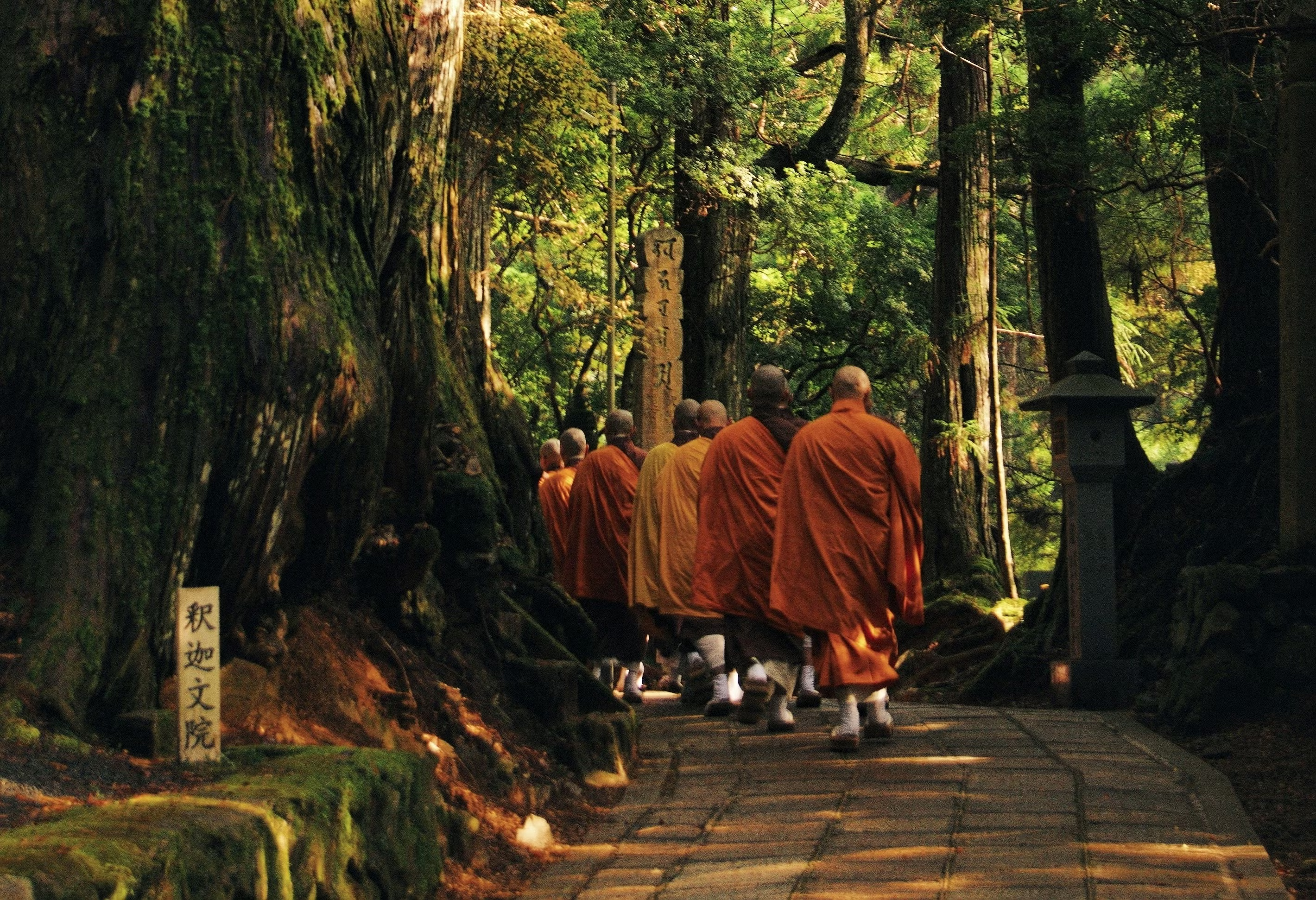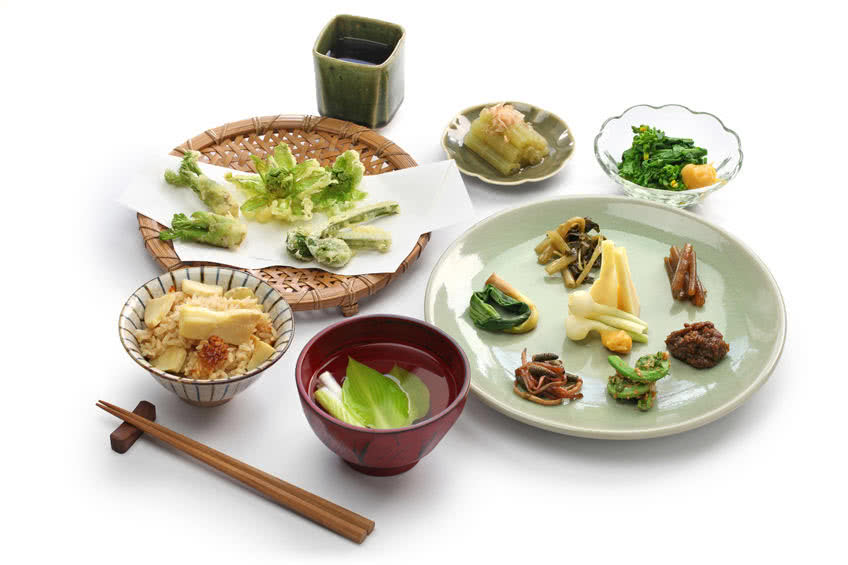Shojin ryori
Buddhist cuisine, 齋菜, 斋菜, 精進料理
Buddhist cuisine is an Asian cuisine that is followed by monks and many believers from areas historically influenced by Mahayana Buddhism. It is vegetarian or vegan, and it is based on the Dharmic concept of ahimsa . Vegetarianism is common in other Dharmic faiths such as Hinduism, Jainism and Sikhism, as well as East Asian religions like Taoism. While monks, nuns and a minority of believers are vegetarian year-round, many believers follow the Buddhist vegetarian diet for celebrations. Buddhists believe that cooking is seen as a spiritual practice that produces the nourishment which the body needs to work hard and meditate. The origin of "Buddhist food" as a distinct sub-style of cuisine is tied to monasteries, where one member of the community would have the duty of being the head cook and supplying meals that paid respect to the strictures of Buddhist precepts. Temples that were open to visitors from the general public might also serve meals to them and a few temples effectively run functioning restaurants on the premises. In Japan, this culinary custom, recognized as shōjin ryōri (精進料理) or devotion cuisine, is commonly offered at numerous temples, notably in Kyoto. This centuries-old culinary tradition, primarily associated with religious contexts, is seldom encountered beyond places like temples, religious festivals, and funerals. A more recent version, more Chinese in style, is prepared by the Ōbaku school of zen, and known as fucha ryōri (普茶料理); this is served at the head temple of Manpuku-ji, as well as various subtemples. In modern times, commercial restaurants have also latched on to the style, catering both to practicing and non-practicing lay people. Most of the dishes considered to be uniquely Buddhist are vegetarian, but not all Buddhist traditions require vegetarianism of lay followers or clergy. Vegetarian eating is primarily associated with the East and Southeast Asian tradition in China, Vietnam, Japan, and Korea where it is commonly practiced by clergy and may be observed by laity on holidays or as a devotional practice.
Source: Wikipedia

